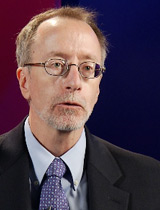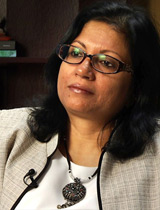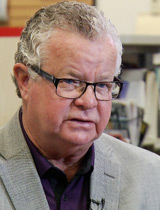Arizona was hit sooner and harder by the recession than the rest of the country, economists say. But the state is slowly making a comeback, and job growth will be minimal but steady, at least for the next two years.
Figures from the state's Office of Employment and Population Statistics showed 2013's growth was about 2.1 percent, the same as 2012, and that rate will go up to 2.4 percent by 2015. The report also showed Tucson saw a less than 1 percent job growth since 2012, and will continue to stay behind Phoenix and other parts of the state.
 George Hammond, director and research professor at the University of Arizona's Eller College of Management.
George Hammond, director and research professor at the University of Arizona's Eller College of Management. "We are still recovering from the impacts of the great recession," said George Hammond, director and research professor at the University of Arizona's Eller College of Management. "Arizona got hit really hard during the downturn. Our percentage job loss was about double the national rate, and we are still reeling from that."
He said the Phoenix metro area has been growing a lot faster than metro Tucson. Phoenix's job growth was 2.8 percent last year, he pointed out.
"A big part of that slowdown that we saw was connected to the increased federal fiscal drag that we experienced," Hammond said. "The federal government is a relatively large employer in the local economy... so when we started seeing a lot of pressure on federal government budgets, that put a lot of pressure on Tucson's economy and Tucson's growth suffered as a result."
Also, 70 percent of Arizona's jobs are in Phoenix, said Aruna Murthy, director of economic analysis for the Arizona Department of Administration’s Office of Employment and Population Statistics.
"Tucson has only about 15 percent, and the sectors are very narrow," she said.
Places such as the Pima County One-Stop Career Center are witnesses to the current slow job growth in Tucson.
 Aruna Murthy, economist with AZ Office of Employment and Population Statistics.
Aruna Murthy, economist with AZ Office of Employment and Population Statistics. The program functions as a middleman between unemployed private-sector workers and possible employers.
Jim Mize, the employer outreach manager at the One-Stop Career Center, said companies are hiring, they are just not hiring in large numbers. But the program tries to take advantage of the little demand there is.
"We interact with about 800 or 900 employers a week, and we have an about 85 percent placement rate," he said. "So if someone was out of work through no fault of their own, or even with fault of their own, this center has case managers...training sessions...to help (people) find a job and keep a job."
"If you looked at 2012, we actually lost jobs in the economy, we were down about 2.7 percent in Pima County, we are looking to improve that," he added.
Mize explained the program works with employers to determine what type of skills they need. From there, One-Stop helps train job seekers, which range from high school students to older adults, in those areas.
"What I pitch is how to get employers engaged and fixing their needs, they have skill sets that they are looking for, and machinists are an example…we have done a tremendous work in the last two years, getting the employers together with the educational facility that (can) train...we work a lot with high schools...try to enhance the STEM (science, technology, engineering and math) programs," Mize said.
 Jim Mize, employer outreach manager at the Pima County One-Stop Career Center.
Jim Mize, employer outreach manager at the Pima County One-Stop Career Center.Hammond said high levels of education in certain areas has made Arizona attractive to manufacturing companies and other business sectors.
"I think Arizona is attractive on a number of front, the climate is great, at the moment our workforce is relatively highly educated..." he argued. But the state has some infrastructure challenges, and needs to continue ensuring the country that Arizona has educated, skilled workers, he added.
Economists at Arizona State University's annual Economic Outlook meeting Thursday argued the state's economy is two years away from a full recovery, The Associated Press reported.
Hammond said he anticipates about the same timeframe to start noticing a faster job growth.
"I think Arizona is well-positioned to grow faster than the national rate in coming years, part of it related to the federal fiscal rag in 2013, most of what drove that drag...is now done, so that opens the door to a faster growth for the state and for the Tucson area," he argued. "I think we have at least another year to go before we get a faster growth."

By submitting your comments, you hereby give AZPM the right to post your comments and potentially use them in any other form of media operated by this institution.